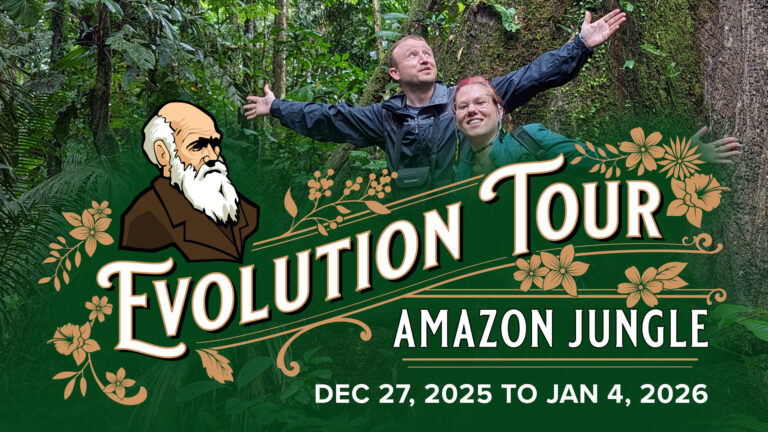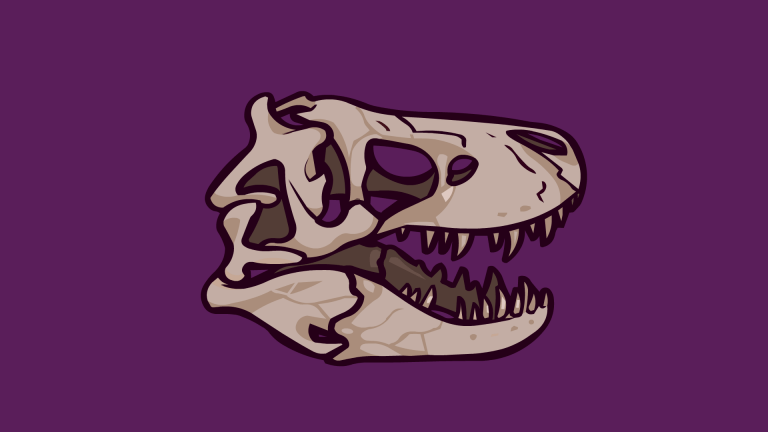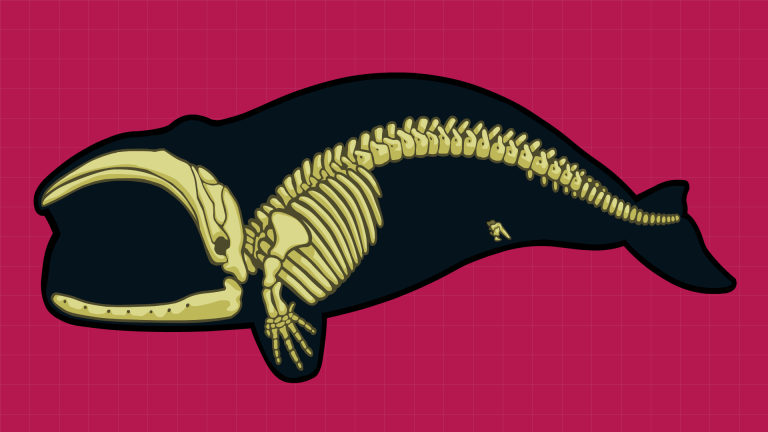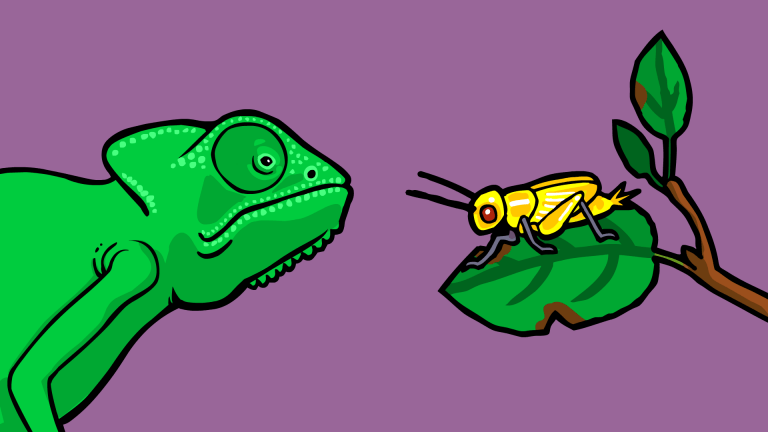Overview
You may have been told online or at special interest museums that dinosaurs once lived alongside humans, or maybe even still live today. Here we look closely at this claim, and discover what science can tell us.
This animation was based partially on two wonderful books:
Hunting Monsters, which is about the quests of various scientists and explorers attempting to discover mythical beasts, some of which turned out to be real! You can get yourself a copy here: Amazon link.
And the book Dinosaurs – How they lived and evolved. This is a huge, full-colored book, summarizing all the discoveries we’ve made about dinosaurs since the first was described in 1824. It’s the best book I read this year (the year is still young I suppose but… It’s pretty dang good!). Get your copy here: Amazon link.
FALSE CLAIMS DEBUNKED
In this video we show the best supposed evidence that humans and dinos once lived together: several corpses, supposed fossils, and pieces of “ancient” dinosaur artwork. Below are links where you can learn more about each claim. Where possible, I also link to articles by creationists debunking these claims because some of our viewers are reluctant to accept secular sources alone:
FOSSIL OF DINO ETING MAN – This was an April Fools joke put on by the NMSR. Unfortunately, because some dino enthusiasts were so eager to believe, it is still used today in debates as proof that humans and dinosaurs once lived together: NSMR April Fools’ joke.
DINO AND HUMAN FOOTPRINTS TOGETHER – These “human” prints are actually dinosaur tracks with the toes naturally filled in afterwords, leaving a vaguely human-like shape: TalkOrigins article.
Creationists also now accept that these prints are not human: Creation.com article.
DEAD KILLER WHALE MISTAKEN FOR DINOSAUR – Here is the full video the internet photos were grabbed from. In the video, you can clearly see the whales front flippers. YouTube Video.
DEAD SHARK MISTAKEN FOR PLESIOSAUR – Basking sharks often float after dying, and quickly lose their gills and jaws as the rot. This gives them the appearance of being a long necked, small headed creature, superficially similar to a plesiosaur: Wikipedia article.
Here is a creationist site telling other dino enthusiasts that it is a shark after-all: Answers in Genesis article.
SUPPOSED STEGOSAURUS SCULPTURE – Here is an excellent video by Trey the Explainer on the subject: YouTube video.
ICA STONES WITH DINOSAUR CARVINGS – These carvings were hoaxes, created by profiteering Peruvian farmers and sold to gullible tourists: Wikipedia article.
Here is a creationist group warning about the controversial history of the stones: Creation.com article.
DINO SOFT TISSUE – I developed an animation going over the work of Mary Schweitzer and others, which has found soft tissue inside dinosaur bones. Check it out (with lots of good reading listed in the description): YouTube video.
For Teachers
The content of this video meets criteria in the following Disciplinary Core Ideas defined by Next Generation Science Standards. Use our videos to supplement classroom curriculum.
Contributors
Our videos benefit from guidance and advice provided by experts in science and education. This animation is the result of collaboration between the following scientists, educators, and our team of creatives.
Team
- Jon Perry
- Anthony Danzl
- Rosemary Mosco
- Jordan Collver
- Tyler Proctor
Advisors
- Adam Kent, PhD
- Jessica Creveling, PhD
Sources
Corrections
At 3:32 we show the skull of Dimetrodon coming out of Devonian rock. Dimetrodon is actually found in the Permian rock. Thanks to YouTube user “Not Tuska” for pointing out the error.
Transcript
Did dinosaurs ever live alongside humans?
Before digging in it’s probably worth noting that for the same reason scientists consider humans to be mammals, they also consider birds to be dinosaurs. Birds are currently placed within the dinosaur clade. With this in mind the answer to our question is: Yes! Just look outside and you’ll likely spot a dinosaur in less than a minute.
That said, here we want to know about the big ones: dinosaurs like T-Rex, stegosaurus, and triceratops. We even want to know about some of their non-dinosaur comrades: creatures like pterosaurs and plesiosaurs.
In the 1933 film King Kong, an island is discovered, filled with dinosaurs and other magnificent beasts. The movie, of course, was just fiction but today there are enthusiasts who claim that dinosaurs are either still alive in remote regions of the world, or that they recently went extinct and that ancient people once lived alongside them. Could this really be?
According to what we know about biology and evolution, it is technically possible. Coelacanths and crocodiles, for example, have been around since the time of the dinosaurs and modern forms do still exist. Coelacanths were even thought to have died out with the dinosaurs until a living population was recently found.
Though possible it may be, as of now, there is no solid scientific evidence that dinosaurs lived at the same time as humans.
Science can be described as: the collection and documentation of observable facts, and an ongoing discussion about how those facts can be best linked together into explanations.
This means that if you want to scientifically claim that dinosaurs once lived with humans, first you need solid evidence. What kinds of evidence would qualify?
Well, photos and eyewitness accounts might help get individual researchers interested, but these things are not convincing to the scientific community at large. Photos are just too easily faked, and eyewitness accounts are often inaccurate. If you really want to be convincing, what you would want to find are things like human and dinosaur bones fossilized in the same rock layer, that would certainly do it. Better yet, a fresh dinosaur carcass (though please don’t kill a dinosaur if you find one), or best of all, capturing an actual living specimen!
Unfortunately so far, all claims of human and dinosaur fossils alongside each other have proven either to be hoaxes, or misinterpretations. The same is true of rotting corpses thought to belong to dinosaurs or plesiosaurs. The same is true of ancient human artwork claimed to be depictions of dinosaurs.
So far as we know, with the exception of birds, the only place to find a dinosaur is in the fossil record. So what does the fossil record tell us?
As volcanoes form mountains that erode into dust; and as ecosystems grow and then die, layers of sediment slowly build up on the face of the Earth, eventually becoming sedimentary rock.
As a result of this normally slow sediment buildup, different sets of rock layers represent different time periods in Earth’s history. The further down you go, the further back in history you travel.
Plants and animals that die and are buried in these sediments, are sometimes preserved as fossils.
Using multiple lines of evidence (chemical composition, radiometric dating, orientation of magnetic particles, and the presence of certain well studied fossils) scientists have been able to create geological maps, showing which layers of rock in one region or continent, correlate with specific layers of rock in other regions or continents. These maps now allows us to look at fossils all around the globe and study the history of life in chronological order!
In these studies, dinosaurs appear to have evolved from an early group of reptiles called Archosaurs during an ancient time period known as the Triassic. Moving up through the layers, dinosaurs evolved into many forms during the Jurassic, and dominated the land until the end of a period called the Cretaceous. Remember that, the Cretaceous, it’s an important one.
Many species of primitive mammals also evolved alongside dinosaurs at this time but no apes, and not a single human fossil has ever been confirmed in rock layers nearly as old as the Cretaceous.
Throughout the history of life, 5 major extinction events can be clearly seen in the fossil record – these are time periods where almost all lifeforms abruptly disappear, leaving a only a few surviving groups to evolve and repopulate the planet. One such event is found at the end of the Cretaceous and marks the demise of all non-bird dinosaurs.
Changing sea levels and intense volcanic activity seem to have weakened dinosaur populations before the extinction event, and then, catastrophe!
At the top of the cretaceous is a distinct line known as the k-pg boundary
Chemical analysis suggests that one or more massive space rocks struck the Earth at this time. Recently, the discovery of a 110 mile wide crater, now buried under sediments in Mexico’s Yucatan Peninsula, confirms this idea, and tells us that the comet or asteroid could have been over 6 miles in diameter. While a few dinosaur populations may have survived a short while after, only groups of smaller animals managed to hang on long enough to repopulate the Earth.
Among the mammals that survived, one group eventually split with one branch giving rise to apes, and finally, in a set of rock layers known as the Pleistocene, fossils representing modern humans have been found.
So to sum things up, Did dinosaurs ever live alongside humans?
While it is hypothetically possible, all verifiable evidence we know of, tells us that the answer is no.
With the exception of birds, the dinosaurs died out in a catastrophe near the end of the Cretaceous. According to radiometric dating, the time gap between the extinction of dinosaurs, and evolution of modern humans, is nearly 66 million years.
I’m Jon Perry and that’s what we currently know about the extinction of the dinosaurs, Stated Clearly.





